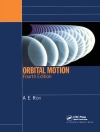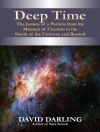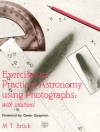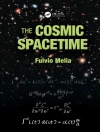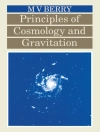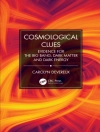The symposium “Star Clusters in the Era of Large Surveys” was held in Lisbon on Sep 9-10 during the JENAM 2010. It served as a platform for discussing what and how recent, on-going and planned large-area ground-based and space-based surveys can contribute to producing a major leap in this research field, which has a strong European history.
Scientific topics addressed included: cluster searches, clustered vs. isolated star formation, large-scale star formation, enrichment of the field population, structure, populations and evolution of the Milky Way, cluster dynamics (internal and within the Milky Way), variability of stars in clusters (from time-resolved surveys), analysis techniques for large samples and archiving.
This proceedings book provides a snapshot of the ongoing discussion on the role of large surveys in star cluster research, and serves as a reference volume for the state-of-the art in the field.
表中的内容
Part I Recent, on-going and planned surveys. Cluster searches. Technical challenges.- Optical digital Galactic Plane surveys and star-cluster science.- Census of Milky Way Star Clusters from Infrared Surveys.- Time-resolved surveys of stellar clusters.- SDSS-III/APOGEE: Detailed Abundances of Galactic Star Clusters.- Processing Data from Large Infrared Surveys.- Properties of Star Clusters Found and Investigated by Data from Large Surveys.- Developments of the open cluster database WEBDA.- Inferring stellar properties using colours, parallaxes and an HRD prior.- AstrOmatic software in the era of large stellar photometric surveys.- Cluster parameter determinations for large datasets.- Open clusters science in the Virtual Observatory era.- GALExtin: A VO-Service for estimating Galactic interstellar extinction.- YSO clusters on galactic infrared loops.- VVV Search for New Young Clusters Towards the Star Forming Regions in our Galaxy. First Results.- New Milky Way star cluster candidates from DSS and 2MASS.- VVV study of the young Milky Way star clusters: Mercer 35, 69 and 70.- Part II Star formation & evolution. The Milky Way and beyond.- Optical surveys of young open clusters.- Probing the low-mass end of the IMF in star-forming regions: a WIRCam/CFHT Survey.- Dynamics in the embedded phase: accretion, collisions, contraction.- Unraveling the initial conditions of star formation in Serpens North.- Do All Stars in the Solar Neighbourhood Form in Clusters?.- Uncertainties in the Age Scale for Young Open Clusters and Moving Groups.- Are there age spreads in star forming regions?.- The relevance of X-ray surveys for the study of the properties of young open clusters.- Chandra observations of Cygnus OB2.- Young massive stellar clusters in the Milky Way: the Cl1813-178 and GLIMPSE 9 clusters.- Multiple populations in Globular Clusters: The role of AGB and super-AGB stars.- Chemical properties of the open cluster population.- Deep and extended multiband photometry of the Galactic globular cluster M71.- Chromospheric activity and Lithium abundance in NGC2516.- A deep photometric survey of the double cluster h & c Per.- A detailed spectroscopic analysis of the open cluster NGC 5460.- A kinematic study of open clusters: implications for origin.- The Luminosity Function of Globular Clusters Used as a Distance Indicator.- Chemical properties of the Hipparcos red clump.- Chemical composition of a kinematically identified stellar group in the Milky Way.- Star Disk Interaction in T Tauri Stars: Analysis of the Mg II Lines.- Indication of Mass Segregation in LMC Star Clusters.- Carbon and nitrogen as tracers of stellar evolution in red clump stars of open clusters.- Observations of the IMF in clusters.- Dynamical evolution of rotating globular clusters with embedded black holes.- Stellar populations in the super star clusters NGC 3603 and 30 Doradus.- Dynamical Expansion of Star Clusters.- The Metallicity Gradient in the Galactic Disk Revealed by Cepheids and Open Clusters.- Spitzer’s view of NGC2264’s circumstellar disk population.- Super star clusters in IR-luminous interacting galaxies: the NIR luminosity function.- Populations of Variable Stars in Open Clusters.- Tracing the structure of the Perseus Arm with IPHAS.- Setting up the T35 telescope at Sierra Nevada Observatory for detecting variable stars in open clusters.- The substellar population of the s Orionis cluster.


